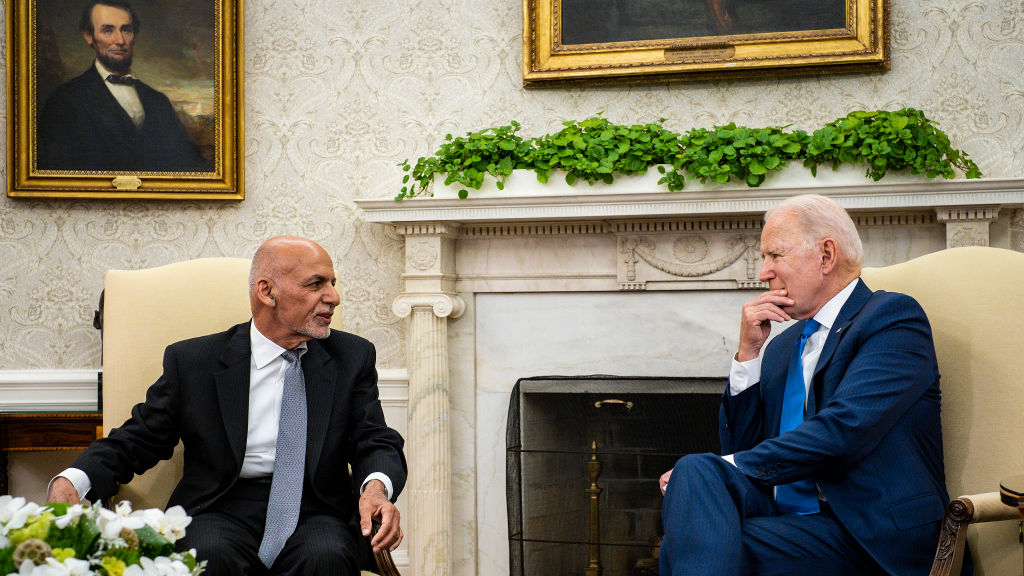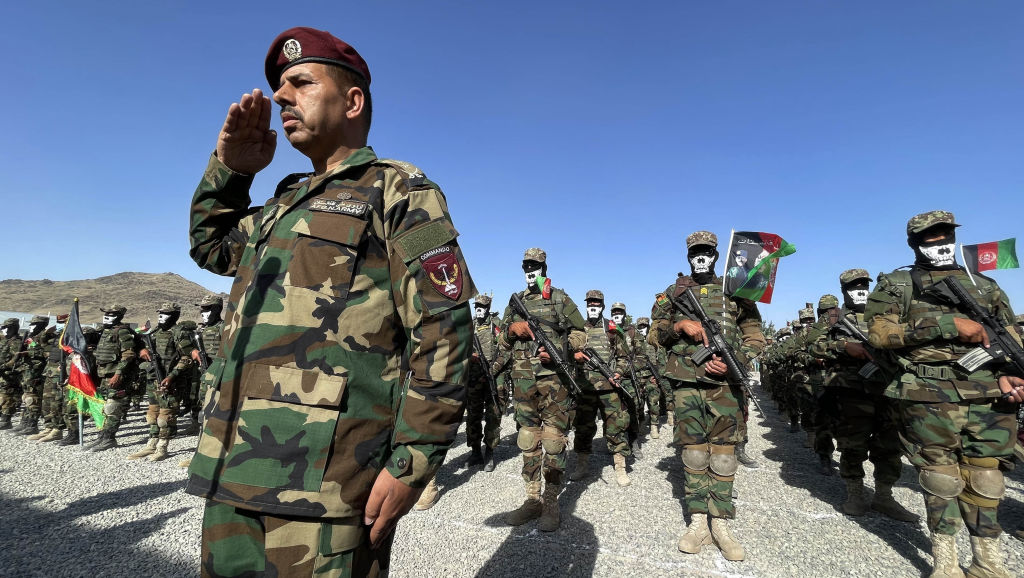
U.S. President Joe Biden (R) hosts Afghanistan President Ashraf Ghani in the Oval Office at the White House in Washington, D.C., June 25, 2021. /Getty
U.S. President Joe Biden (R) hosts Afghanistan President Ashraf Ghani in the Oval Office at the White House in Washington, D.C., June 25, 2021. /Getty
Editor's note: Guy Burton is an adjunct professor at Vesalius College, Brussels. The article reflects the author's opinions, and not necessarily the views of CGTN.
On June 25, U.S. President Joe Biden met his Afghan counterpart, Ashraf Ghani, at the White House. He said that although the U.S. will complete the withdrawal of its military personnel from the country by September and thus bring to an end the longest American military intervention abroad – what has become known as the "forever war" – the U.S. will continue to support Afghanistan and its government beyond that date.
Although welcome, Biden's statement raises a number of questions and uncertainties for the future of both Ghani and Afghanistan. Perhaps the most important is the question of the Taliban and what it will do.
Following the 9/11 attacks by Al Qaeda in 2001, the U.S. and other forces invaded Afghanistan to break up the terrorist group. They did so when the Taliban – an Islamist group which governed Afghanistan at the time – refused to hand them over, having given sanctuary to the group. The Taliban, which had seized power in Afghanistan in 1996 and imposed a strict form of Islamic rule that included gender segregation and denied education to girls was evicted from government.
Having been forced out of Afghanistan, the Taliban regroup, recruited and raised funds from a variety of external sponsors. It then began mounting an insurgency directed against the Western-backed political power, which faced challenges from other directions, including the jihadist Islamic State group after 2014.
But of all the rivals faced by the post-2001 Afghan state, it was the Taliban that became the strongest. From 2013 it began to acquire control over large parts of the countryside and around provincial capitals, where it has established a shadow form of government. By the end of the last decade, it controlled nearly half the country.
Beginning in 2018, the U.S. began talks with the Taliban that culminated in an agreement in February 2020 by the U.S. and other international military forces to withdraw. At the same time, it was understood that the Taliban would support American counterterrorism efforts to prevent groups like Al Qaeda from re-establishing themselves in Afghanistan.
Despite the agreement, some American officials soon accused the Taliban of not living up to their end of the bargain, either in relation to Al Qaeda or in ending its conflict with the Afghan government. Indeed, Ghani is currently waiting out the Americans to mount a final offensive.
Should that happen, it is unclear what would happen next. Much of Biden's commitment to Afghanistan is predicated on Ghani and the current political system remaining in place. That includes continuing financial support for Afghanistan's national defense and security services, along with training for its counterterrorism forces.
A Taliban victory could put an end to those military funds or assistance. It could also make it a lot harder for American development aid to continue flowing as well. Some American officials are skeptical that the Taliban has changed much ideologically since 2001. They fear that if they return to power, they may also bring back their rigid form of rule.
Moreover, with the U.S. no longer present in the country, it would be a lot harder for them to monitor and scrutinize how the money is used.
Alternately, there is a more optimistic perspective associated with the Taliban back in power. That scenario is based in part on the weak state of Afghanistan's economy and public services. Although the country's economic growth surged in the years after 2003, it began to slow down as violence became more ferocious a decade later.

Afghan special force commando unit officers and soldiers attend a graduation ceremony at the military academy in Kabul, Afghanistan, May 31, 2021. /Getty
Afghan special force commando unit officers and soldiers attend a graduation ceremony at the military academy in Kabul, Afghanistan, May 31, 2021. /Getty
Presently, the vast majority of the population is below the poverty line; nearly half are at crisis or emergency levels in terms of food security. Healthwise, the country is struggling, a situation that has been exacerbated by the impact of COVID-19. Given such bleakness then, the Taliban may be receptive to foreign funds and be prepared to follow American conditions and demands as a result.
Against this hopeful view is a bleaker one, in which the likely replacement of Ghani with the Taliban provides no relief, but instead pushes Afghanistan further down the path of violence. When the Taliban won power in 1996 it did so in the wake of a brutal and multisided civil war that had lasted for many years. Many of the principal actors were local and powerful warlords and their militias.
Following the Taliban's eviction, many of those warlords were incorporated into the new political system. That process has taken place under both Ghani as well as his predecessor, Hamid Karzai, until 2014.
However, their involvement is conditional. Should they begin to feel that the Afghan state is unable to protect them, or if they believe that their interests will be threatened by the Taliban, they may well move to act independently.
Ominously, there may be signs that this is already beginning to happen. Abdul Ghani Alipoor, for example, has begun to organize and armed his community in the central part of the country after claiming that the government was doing little to protect it. Elsewhere, former fighters like Ismail Khan and Gulbuddin Hekmatyar have organized rallies of armed men in recent months.
Should the fears of these individuals begin to catch on, Afghanistan could return to its previous chaos. If so, that would also be a disaster for the U.S. and the international community, from the $2 trillion that has been spent in the country since 2001 along with the institutions that it has so laboriously built and sponsored.
(If you want to contribute and have specific expertise, please contact us at opinions@cgtn.com.)

